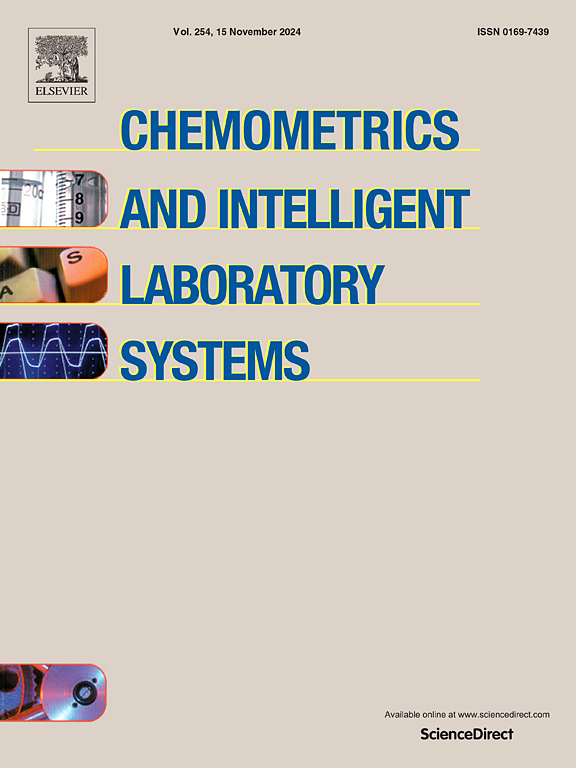Supervised laser induced breakdown spectroscopy classification for prehistoric chert provenance: A methodological framework
IF 3.7
2区 化学
Q2 AUTOMATION & CONTROL SYSTEMS
Chemometrics and Intelligent Laboratory Systems
Pub Date : 2025-04-25
DOI:10.1016/j.chemolab.2025.105411
引用次数: 0
Abstract
The sourcing of lithic artefacts, and in particular chert, is a key proxy for archaeologist to better understand hunter-gatherer populations. The heterogeneous structure of chert samples, low trace element content, and variability of outcrops make the geochemical characterisation a methodological challenge. Laser Induced Breakdown Spectroscopy (LIBS) can overcome the issues of variability by enabling fast and low-cost and nearly non-destructive analysis of samples. This paper presents a protocol for chert sourcing using LIBS, by comparing several supervised classification models and signal pre-processing with two different approaches: a selection of features or the use of broadband spectra, with an example application on marine flysch cherts from the central Pyrenes (France) presenting similar micropaleontological and textural features.

史前燧石物源的激光诱导击穿光谱分类:方法框架
石器制品的来源,特别是燧石,是考古学家更好地了解狩猎采集者人口的关键代表。燧石样品的非均质结构、低微量元素含量和露头的可变性使地球化学表征成为方解学上的挑战。激光诱导击穿光谱(LIBS)可以通过实现快速、低成本和几乎无损的样品分析来克服可变性问题。本文通过比较几种监督分类模型和两种不同方法(特征选择或使用宽带光谱)的信号预处理,提出了使用LIBS进行燧石采集的协议,并以法国比利牛斯山脉中部的海洋复理燧石为例,展示了相似的微古生物学和纹理特征。
本文章由计算机程序翻译,如有差异,请以英文原文为准。
求助全文
约1分钟内获得全文
求助全文
来源期刊
CiteScore
7.50
自引率
7.70%
发文量
169
审稿时长
3.4 months
期刊介绍:
Chemometrics and Intelligent Laboratory Systems publishes original research papers, short communications, reviews, tutorials and Original Software Publications reporting on development of novel statistical, mathematical, or computer techniques in Chemistry and related disciplines.
Chemometrics is the chemical discipline that uses mathematical and statistical methods to design or select optimal procedures and experiments, and to provide maximum chemical information by analysing chemical data.
The journal deals with the following topics:
1) Development of new statistical, mathematical and chemometrical methods for Chemistry and related fields (Environmental Chemistry, Biochemistry, Toxicology, System Biology, -Omics, etc.)
2) Novel applications of chemometrics to all branches of Chemistry and related fields (typical domains of interest are: process data analysis, experimental design, data mining, signal processing, supervised modelling, decision making, robust statistics, mixture analysis, multivariate calibration etc.) Routine applications of established chemometrical techniques will not be considered.
3) Development of new software that provides novel tools or truly advances the use of chemometrical methods.
4) Well characterized data sets to test performance for the new methods and software.
The journal complies with International Committee of Medical Journal Editors'' Uniform requirements for manuscripts.

 求助内容:
求助内容: 应助结果提醒方式:
应助结果提醒方式:


